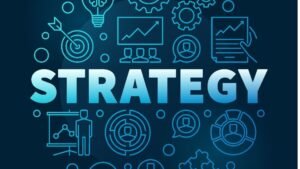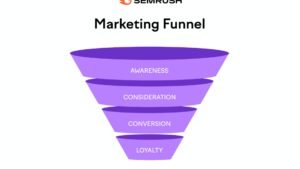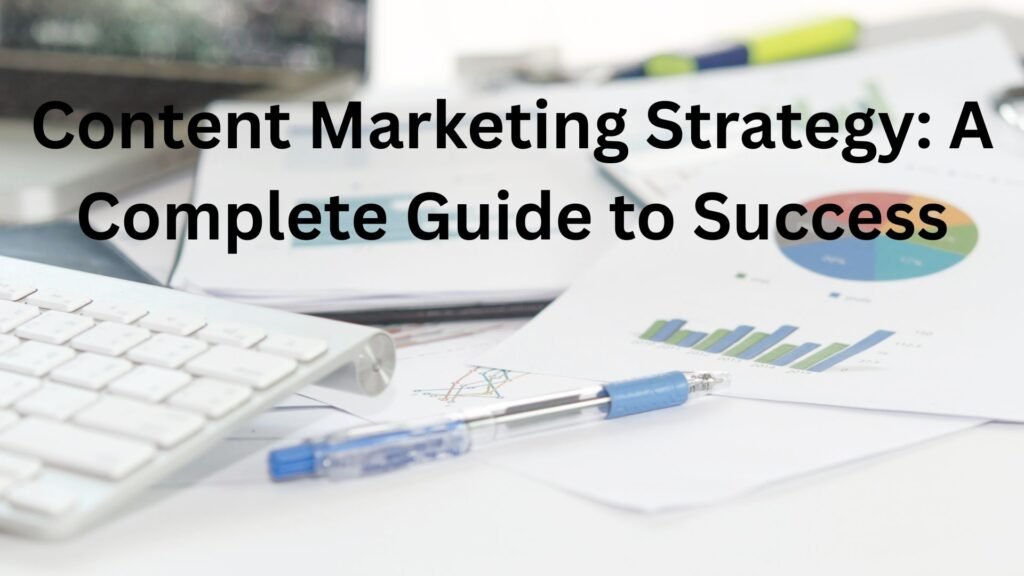
In today’s dynamic digital age, content marketing strategy has transformed from a supportive marketing channel to the very core of successful brand communication. Businesses, whether startups or global enterprises, now realize that content is not just king—it is the entire kingdom. A robust content marketing strategy does not merely boost visibility; it cultivates trust, enhances credibility, and forges long-lasting relationships with customers.
Developing an effective content marketing approach is not a matter of publishing random blog posts or engaging in sporadic social media activity. It involves a deep understanding of the audience, their needs, the business goals, and the tools that connect both in harmony. This comprehensive guide aims to unpack every element of a successful strategy, from foundational principles to actionable execution.
Understanding the Essence of Content Marketing

In its purest form, a content marketing strategy is a long-term approach that prioritizes developing enduring bonds with a target audience via pertinent and regular material. Content marketing aims to offer value by providing knowledge, amusement, or inspiration, in contrast to traditional marketing, which frequently disrupts the audience with overt promotional messaging.
Given how many commercials customers are exposed to these days, a well-crafted content marketing strategy works especially well. They desire relevance, sincerity, and openness. These needs are met by content marketing, which provides informational, entertaining, or helpful content. A blog post, video, podcast, email, whitepaper, infographic, or even a meme can be used for this, provided that it appeals to the audience and advances corporate goals.
Why Strategy is the Cornerstone

Creating content at random without a plan is like trying to navigate a ship without a compass. A strong content marketing plan makes sure that every piece of content you create has a purpose, whether that purpose is to raise brand awareness, create leads, nurture prospects, or enhance customer retention.
Strategy provides direction. It defines the audience, sets the tone, selects the platforms, schedules the content, and establishes how performance will be measured. It also ensures consistency across all channels and messages, which is vital for building brand recognition and trust.
Identifying and Understanding the Target Audience
Before creating content, it is essential to know who it is being created for. Understanding the audience’s demographics, psychographics, challenges, preferences, and behaviors lays the foundation for all content marketing strategy efforts.
This process often starts with the development of buyer personas—semi-fictional representations of ideal customers based on market research and real data. These personas help tailor content in tone, format, and subject matter. For instance, content for a tech-savvy millennial will differ greatly from that designed for a C-level executive in the finance sector. Creating personas that align with your content marketing strategy ensures each message resonates deeply with the intended audience.
Setting Clear and Measurable Goals

Every content marketing strategy must have clearly defined goals. These objectives guide content creation, help prioritize tasks, and serve as benchmarks for success. Common content marketing goals include increasing website traffic, building email subscribers, generating leads, improving SEO rankings, and boosting sales conversions.
Using the SMART goal framework Specific, Measurable, Achievable, Relevant, and Time-bound ensures that goals are not vague aspirations but realistic and trackable targets.
Creating Valuable and Relevant Content
The heart of a content marketing strategy lies in the content itself. To captivate and engage, content must be valuable, relevant, and unique. This means creating material that answers questions, solves problems, and adds new perspectives to existing conversations.
Relevance is achieved when content addresses the specific interests or pain points of the target audience. Value, on the other hand, is delivered when the content provides knowledge, entertainment, or inspiration that readers did not possess before consuming it.
Consistency in publishing frequency, tone of voice, and content themes helps build familiarity and trust with the audience.
Diversifying Content Formats
Although most methods still rely on blogs, audiences today receive content in a variety of media. This is acknowledged by a good strategy, which incorporates a variety of interactive, visual, audio, and written information.
Particularly on social media, videos are becoming more and more popular, while podcasts are better suited for listeners who can multitask. Complex data can be effectively condensed into easily understood pictures with infographics. Long-form material, such as eBooks and whitepapers, offer comprehensive value and are frequently used as gated content to generate leads.
Mapping Content to the Customer Journey

Effective content marketing strategies cater to users at every stage of their journey—from first awareness of a brand to long-term loyalty. Each stage demands different types of content and messaging.
At the awareness stage, content should educate and inform. Blog posts, social media snippets, and explainer videos work well here. The consideration stage requires more in-depth content like case studies, comparison guides, or product demos. Finally, the decision stage benefits from testimonials, free trials, and special offers.
Post-purchase content, such as onboarding guides, loyalty newsletters, or exclusive updates, helps deepen the customer relationship and encourages advocacy.
Choosing the Right Content Channels

Content needs distribution to deliver value. The channels through which content is shared significantly impact its reach and effectiveness. Businesses must select platforms where their audience is most active and receptive.
Owned channels such as blogs, websites, and email lists provide the greatest control and long-term value. Social media platforms like LinkedIn, Instagram, or TikTok help amplify reach and engage communities. Additionally, earned media such as guest posting or influencer collaborations extends credibility and audience exposure.
Each channel should be used with intention, and content must be optimized accordingly.
Leveraging SEO for Maximum Visibility
Search Engine Optimization is an integral component of a successful content marketing strategy. Optimized content ensures that your material reaches the right audience at the right time through search engines.
Keyword research helps identify what users are searching for, and incorporating these phrases naturally into content titles, headers, meta descriptions, and body text can significantly boost discoverability.
However, SEO today extends beyond keywords. Search engines value user experience, content depth, internal linking, mobile-friendliness, and site speed. Regularly updating content and building backlinks also contribute to better rankings and strengthen your overall content marketing strategy.
Integrating Content with Email Marketing

Email remains one of the most effective channels for content distribution. It offers a direct, personalized line of communication with your audience and boasts high ROI when used correctly.
An email strategy should segment audiences based on behavior, interests, or demographics. This allows the delivery of tailored content that feels relevant and timely. Whether it’s a weekly newsletter, product update, or exclusive blog content, email keeps your brand top of mind and nurtures leads through the funnel.
Automation tools further streamline this process, enabling trigger-based content delivery that responds to specific user actions.
Measuring Performance and Refining Strategy
No content strategy is complete without measurement. Tracking performance ensures your efforts are on the right track and provides insights for optimization.
Key performance indicators (KPIs) vary depending on goals. Common metrics include website traffic, time on page, bounce rate, social shares, backlink growth, email open rates, and conversion rates.
Analyzing these data points reveals which topics, formats, or channels are working best. It also highlights content gaps and areas of improvement. Periodic content audits help refresh outdated material and keep your strategy aligned with evolving audience interests and market trends.
Building a Strong Content Calendar
Your content marketing strategy’s operational core is a content calendar. It specifies what, when, where, and by whom the content will be released. Better resource allocation is made possible, consistency is encouraged, and last-minute scrambling is avoided.
Calendars ought to show the different kinds of material, the dates of publishing, related campaigns, and roles that have been given. Seasonal patterns, product launches, and industry events should also be taken into consideration. A consistent flow of content that sustains engagement is guaranteed by a flexible yet controlled schedule, making the content calendar a vital tool for executing your content marketing strategy effectively.
Encouraging Engagement and Community
Content should not exist in a vacuum. Encouraging interaction—through comments, shares, surveys, or discussions—builds a sense of community and makes your audience feel heard.
Responding to feedback, acknowledging contributions, and involving users in content creation through testimonials or UGC (user-generated content) fosters stronger connections and loyalty.
Content that generates engagement also tends to perform better in algorithms, gaining more organic visibility and reach.
Repurposing and Refreshing Existing Content

Content repurposing is a clever tactic that makes the most of already-existing resources. You can create a video, infographic, podcast, or social media thread from a successful blog piece.
This accommodates different platform content preferences while also saving time. Repurposing makes sure that your main argument is conveyed in a variety of ways.
Enhancing performance and SEO rankings can also be achieved by updating existing content with new insights, better images, or updated statistics.
Case Studies and Success Stories

Learning from real-world examples adds practical perspective. Brands like HubSpot, Red Bull, and Airbnb have successfully used content marketing to become industry leaders.
Whether through educational content, storytelling, or interactive campaigns, their strategies show how content can drive growth, brand affinity, and customer loyalty.
Analyzing such case studies helps identify best practices and avoid common pitfalls.
Staying Agile and Adapting to Trends
The digital world evolves rapidly. What works today might be obsolete tomorrow. Hence, agility is key. Staying informed about emerging trends—like AI-generated content, voice search, or interactive media—enables timely adjustments to your content marketing strategy.
Testing new formats, experimenting with platforms, and monitoring competitors ensures your content marketing strategy remains relevant, adaptive, and competitive in a constantly shifting digital landscape.
Final Thoughts on Content Marketing Strategy
There is no one-size-fits-all content marketing strategy. It is a dynamic activity that calls for imagination, endurance, and patience. Businesses may successfully negotiate the challenges of digital communication and establish deep connections with their audiences if they have a well-defined content marketing strategy in place.
In the end, providing value without expecting anything in return is the essence of content marketing. When done well, it attracts attention, fosters trust, and produces results on its own.
Author: Rafan Rafeeq

